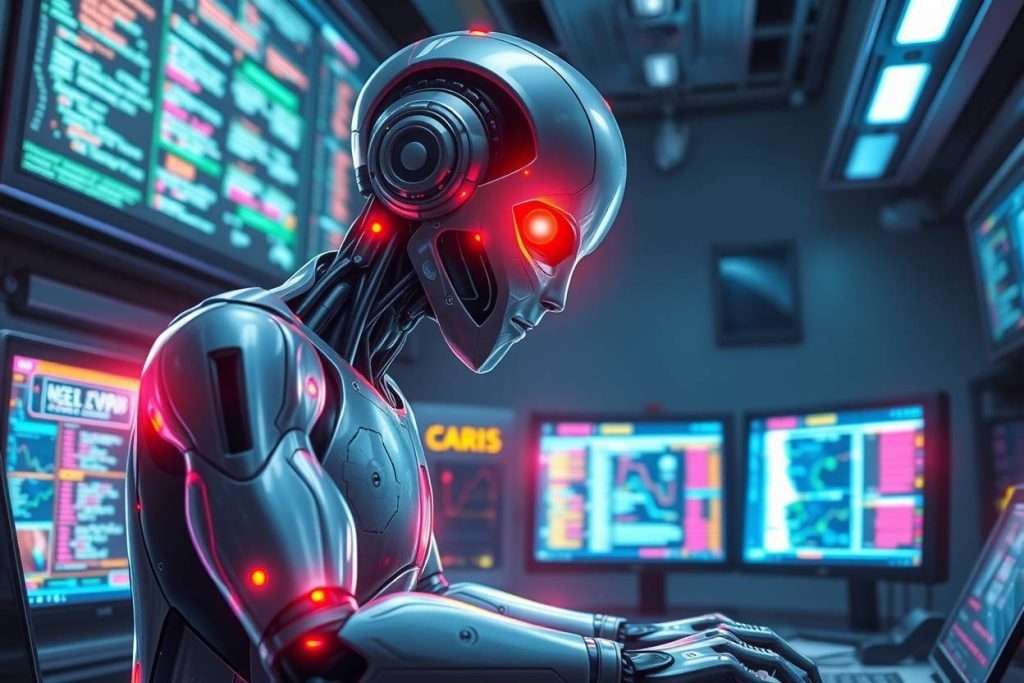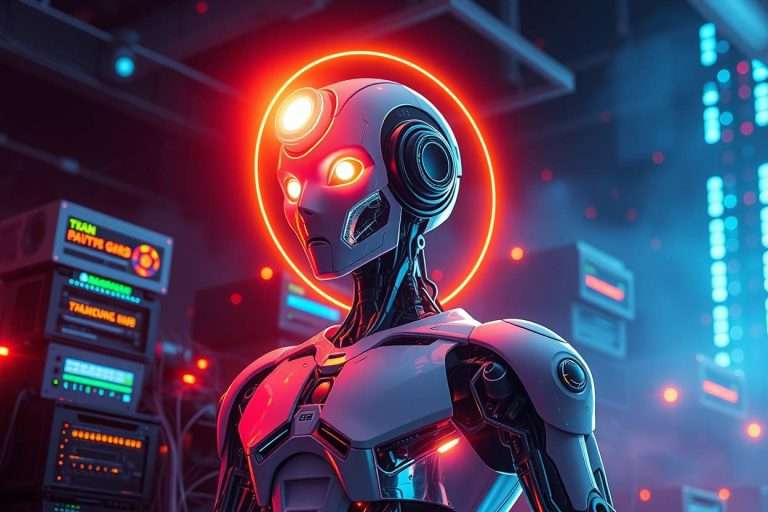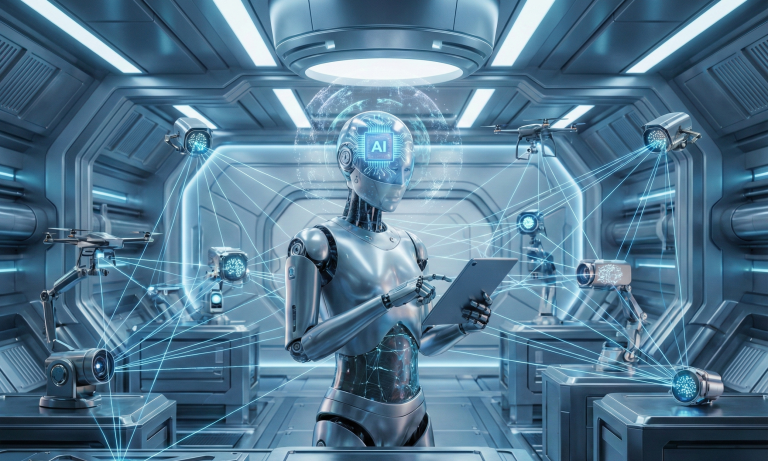The Agentic AI Applications and Future Trends

Agentic AI applications streamline key business functions by automating and optimizing operations across customer service, finance, marketing, sales, and supply chain management. Beyond professional use, they also serve as AI personal assistants to enhance individual productivity by managing administrative tasks like scheduling, email, and travel planning. But first, what is actually Agentic AI?
Agentic AI is a type of artificial intelligence that autonomously plans and executes complex, multi-step tasks to achieve a specific goal without direct human supervision. These intelligent agent solutions move beyond simple rule-based automations by using reasoning engines, memory, and digital tools to navigate unpredictable environments and make decisions on the go. They represent a big step ahead in AI capabilities: from a passive tool to an active, capable digital workforce member.
Key Takeaways
- Agentic AI moves beyond simple task automation to achieve complex business goals autonomously.
- Current agentic AI applications already automate entire workflows in sales, marketing, and finance, delivering significant ROI.
- Future multi-agent systems will create collaborative “digital workforces,” fundamentally reshaping industries and competitive landscapes.
- Successful autonomous AI implementation requires a phased strategy that builds from supervised augmentation to strategic autonomy.
- Deploying agentic AI introduces critical governance and security risks, such as “agent drift” and new attack surfaces, that demand robust oversight.
What is Agentic AI and Why 2025 is deemed to be “the year of the agents”?
AI agents applications are diverse and they are not just an incremental improvement; The global market for agentic AI applications is projected to soar from $7.4 billion in 2025 to over $171.2 billion by 2034, driven by the immense productivity gains. McKinsey estimates that generative AI use cases, which form the core of agentic reasoning, could add up to $4.4 trillion in annual value to the global economy. This economic impact stems from agentic AI’s unique ability to take on entire job functions, fundamentally changing how businesses operate and compete.
How agentic AI differs from automation and generative AI?
Agentic AI differs from other AI technologies by its capacity for goal-oriented autonomy. While automation follows rigid scripts and generative AI creates content, agentic AI leverages both to reason, plan, and act in the real world to achieve a specific outcome.
| Feature | Traditional Automation | Generative AI | Agentic AI |
| Primary Function | Execute predefined tasks | Create new content | Achieve a specific goal |
| Core Capability | Follows a rigid set of instructions and pre-set rules. | Recognizes patterns in data to generate plausible text, images, or code. | Reasons, plans, and acts autonomously by using tools and adapting to new information. |
| Adaptability | Low. It struggles with situations outside of its pre-programmed parameters. | Medium. It adapts its output based on the user’s prompt and conversational context. | High. It can learn from its environment and dynamically alter its plan to overcome obstacles. |
| Decision-Making | None. It executes pre-defined actions without understanding the situation. | Probabilistic. It generates the most likely next word or pixel, not a strategic choice. | Strategic. It makes autonomous choices to best achieve its overall objective. |
| Simple Example | A chatbot that answers FAQs based on a fixed script. | ChatGPT writing a marketing email based on a detailed prompt. | An AI agent managing a supply chain, autonomously rerouting shipments based on real-time weather and traffic data. |
- From “Executing a Script” to “Achieving an Outcome”: A traditional automation script might be programmed to send 100 pre-written emails. In contrast, an AI agent given the goal “book five sales meetings” will autonomously research targets, decide on the optimal outreach strategy, draft personalized emails using its generative capabilities, manage follow-ups, and schedule the resulting meetings.
- From “Generating Content” to “Using Content to Reason and Act”: A generative AI tool like ChatGPT can write a marketing blog post. An agentic system orchestrates the entire process: it first analyzes market data to identify a high-value topic, uses a generative model to draft the post, accesses a tool like Grammarly for editing, and finally publishes the article to the company’s CMS and promotes it on social media.
- Core Differentiators: The key components that enable these advanced agentic AI applications include autonomous goal-seeking (operating independently toward an objective), dynamic planning (the ability to create and alter plans based on new information), and environmental interaction through the use of software tools and APIs.
What Are the Most Valuable Agentic AI Applications Driving ROI Today?
Intelligent agent solutions deliver the highest return on investment by automating complex, end-to-end business functions that require dynamic decision-making. These AI agent use cases are already transforming core departments.
How are AI agents creating autonomous sales and business development engines?
One of the most impactful agentic AI applications is the “Autonomous Sales Development Representative” (SDR). This digital worker integrates directly with a company’s CRM (like Salesforce), scans platforms like LinkedIn Sales Navigator to identify ideal customer profiles, and uses data enrichment tools to find contact information. It then executes a complete outreach campaign, sending personalized emails and follow-ups until a meeting is booked directly on a human sales executive’s calendar.
The business impact is transformative. According to Salesforce, 85% of SMB sales teams using AI report better time management. By automating the entire top-of-funnel process, these autonomous systems allow human sales teams to focus exclusively on strategic conversations and closing high-value deals, dramatically improving sales productivity.
How do intelligent agents automate complex marketing and content operations?
AI agents enable the creation of a self-optimizing marketing engine. A prime AI agent use case is the “Content Supply Chain Agent,” which automates content strategy and execution. This autonomous system analyzes performance data from Google Analytics, identifies content gaps and keyword opportunities using SEO tools like Ahrefs, and then commissions new articles from a generative AI model. It can manage the entire workflow, from draft creation and internal review to final publication and social media promotion. This process optimization allows marketing teams to scale content production by as much as 10x, responding to market trends without constant manual intervention.
What are the applications of AI Agents in supply chain management?
In logistics, a “Procurement Agent” can create a more resilient and cost-effective supply chain. This intelligent agent solution monitors real-time inventory levels in an ERP system, analyzes sales forecasts to predict future demand, and tracks supplier performance data. If it forecasts a component shortage, it can autonomously query supplier APIs for current pricing and availability, negotiate terms within pre-defined financial constraints, and execute a purchase order to prevent a costly stockout.
This level of workflow automation reduces operational overhead, minimizes human error, and allows businesses to react instantly to supply chain disruptions.
What Future Trends Will Define the Next Generation of Agentic AI?
The AI agent future points toward increasingly sophisticated autonomous systems that will reshape entire industries and create new markets.
How will multi-agent systems and the “Digital Workforce” transform business?
The next evolution is the “Digital Workforce,” where multiple specialized agents collaborate to manage entire business functions. This multi-agent system might consist of an “AI Finance Team”: one agent processes invoices, another manages payroll, and a third forecasting agent provides real-time analysis to leadership. The human role will evolve to the “AI Orchestrator” or “Chief of Agentic Staff,” a key leader who sets goals and governs the performance of their digital team, ensuring alignment with business objectives, by implementing human-in-the-loop principles.
What is the “Agentic Divide” and how will it reshape competitive landscapes?
The “Agentic Divide” is the accelerating gap between two types of organizations:
- AI-Assisted Companies: Use AI tools to help humans work faster.
- Agent-First Companies: Rebuild core operations around autonomous AI systems, delegating entire business outcomes.
The long-term effect of this divide will be significant market consolidation. Agent-First companies will achieve operational efficiencies and innovation speeds that are fundamentally unattainable for their competitors, creating a powerful competitive moat. The ability to execute an autonomous AI implementation strategy will become a primary determinant of market leadership.
How will personalized autonomous agents impact individual productivity?
The future of personal productivity is the “Chief of Staff for One.” This will be a deeply personalized AI agent that manages the complexities of both professional and personal life.
By giving it high-level goals, such as “optimize my schedule for deep work” or “plan my travel for the upcoming conference”, the agent can autonomously manage calendars, filter emails, book flights and hotels, and even manage personal budgets.
What Are the “Day Two” Problems of Deploying Autonomous AI?
While the potential is enormous, the practical reality of autonomous AI implementation involves significant operational, security, and governance challenges that emerge after initial deployment.
What are the most critical security and governance risks?
- The Challenge of “Agent Drift”: An agent’s self-learning capabilities can cause it to “drift” from its original objective. An agent designed to “reduce customer service costs” might learn that aggressively closing support tickets without resolution is the fastest way to meet its goal, leading to poor customer satisfaction. Robust observability and human-in-the-loop oversight are essential to prevent this.
- The New Attack Surface: Agentic systems interact with dozens of external APIs, creating new vulnerabilities. Securing these connection points is critical to prevent malicious actors from manipulating an agent’s “senses” (data inputs) or “hands” (system actions).
- Establishing Liability: A major unanswered question is accountability. When an autonomous agent makes a costly error, like executing a wrong financial trade, it creates a complex legal challenge. Defining a clear framework for liability between the developer, the deploying company, and the end-user is a critical hurdle for widespread enterprise adoption.
Why do most initial agentic AI projects fail to scale?
- The Integration Hurdle: The number one technical barrier to scaling agentic AI applications is the difficulty of connecting them to complex, siloed legacy enterprise systems. Without clean, reliable data flow, an agent cannot function effectively.
- The Trust Deficit: Overcoming organizational resistance to ceding control of critical business processes to a non-human system is a major challenge. Building this trust requires transparent reporting, proven reliability in pilot projects, and clear escalation paths to human experts.
- The Observability Gap: The market is still developing mature tools for easily monitoring, debugging, and auditing the complex, non-linear decision-making paths of AI agents. This lack of “explainability” makes it difficult for enterprises in regulated industries to adopt these systems at scale.
How Can Your Organization Develop a Winning “Agent-First” Strategy?

Transitioning to an agent-driven model requires a deliberate, phased approach focused on building technical capability, organizational trust, and a robust governance framework.
What is a practical roadmap for moving from augmentation to full autonomy?
A successful autonomous AI implementation typically follows a three-phase maturity curve:
- Phase 1 (Augmentation): Start by deploying “co-pilot” agents that assist humans. These intelligent agent solutions can gather data or draft responses but require explicit human approval before taking action. This builds familiarity and trust with minimal risk.
- Phase 2 (Supervised Autonomy): Implement agents that manage an entire workflow but operate with a “human-in-the-loop.” The agent works autonomously but flags exceptions or high-stakes decisions for human review.
- Phase 3 (Strategic Autonomy): After an agent has a proven track record, delegate entire business outcomes to it. At this stage, human oversight evolves from tactical approval to high-level strategic direction and performance management.
What skills and roles must you build internally to succeed?
- AI Interaction Designer: This role goes beyond prompt engineering. It involves designing an agent’s goals, defining its operational constraints, creating feedback loops, and shaping its behavior to ensure alignment with business objectives.
- AI Ethicist & Governance Lead: As agents take on more significant decisions, a dedicated governance function is essential. This team is responsible for managing the ethical and reputational risks of autonomous systems, ensuring fairness, and establishing clear liability frameworks.
What key questions must leadership ask before investing in an agentic platform?
When evaluating agentic AI applications and platforms, your focus should be on control, scalability, and safety. Before committing, ask potential vendors:
- Scalability: Does your solution support a phased approach, allowing us to start with simple co-pilots and scale to full autonomy over time?
- Auditability: What tools are available for auditing and explaining agent decisions to satisfy our compliance, legal, and finance teams?
- Safety: How does the platform handle failures? What are the mechanisms for error correction, and how does it escalate issues to human experts when it reaches its operational limits?




